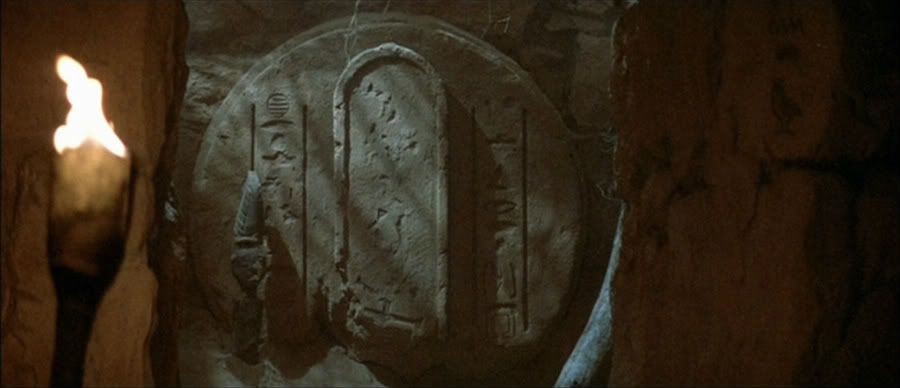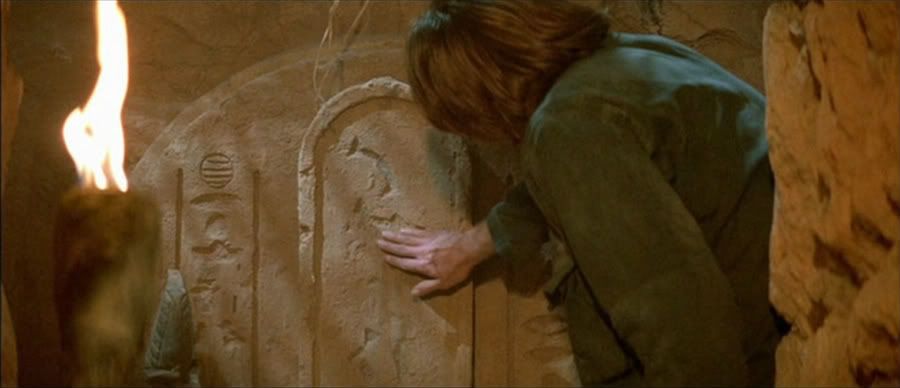Badmonkey
New Member
I love the Stargate movie so I've decided that for my first very own prop build I would like to make the coverstone that is found on Abydos with the glyphs that make up the stargate address for Earth. It's the one where the symbol for the point of origin is missing (Pictured below). It has a very Rosetta Stone feel and I think would make a great piece to display.
I'm trying to work out what materials would be the best to use. I obviously want it to look like it's made from sandstone but would prefer not to have to use real stone! My first inclination is to have a foam base with the details sculpted on top from some kind of putty or clay.
This is my first prop replica, I usually work with costumes, so I would really appreciate any suggestions anyone may have with regards to materials.
Also, has anyone ever seen the original prop? I would love to get my hands on a photo. The only full photo in the movie, the one I've displayed, has sand inside of the glyphs that Daniel Jackson brushes out with his hand. However, once he brushed out the sand they don't show another full view of the glyphs and I'm having trouble working out what they should look like. Please note, these glyphs are not the same as the ones used for Earth in the SG-1 series.


Cheers!
I'm trying to work out what materials would be the best to use. I obviously want it to look like it's made from sandstone but would prefer not to have to use real stone! My first inclination is to have a foam base with the details sculpted on top from some kind of putty or clay.
This is my first prop replica, I usually work with costumes, so I would really appreciate any suggestions anyone may have with regards to materials.
Also, has anyone ever seen the original prop? I would love to get my hands on a photo. The only full photo in the movie, the one I've displayed, has sand inside of the glyphs that Daniel Jackson brushes out with his hand. However, once he brushed out the sand they don't show another full view of the glyphs and I'm having trouble working out what they should look like. Please note, these glyphs are not the same as the ones used for Earth in the SG-1 series.


Cheers!
Last edited:


